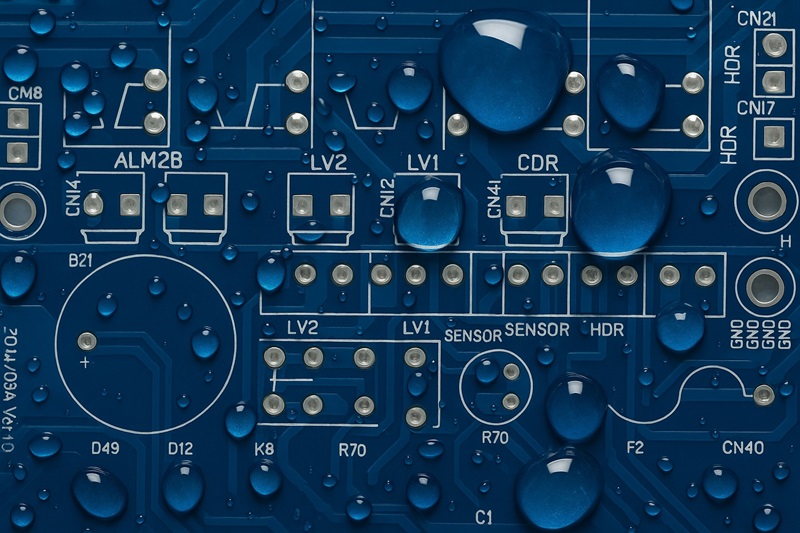Imagine your electronic devices suddenly malfunctioning in harsh environments, not only causing repair costs to skyrocket but also severely undermining customer confidence in your brand. Research shows that PCB failures caused solely by environmental factors result in billions of dollars in losses annually worldwide due to maintenance and downtime. Therefore, for electronic devices operating in outdoor or underwater environments, reducing failure rates is critical, and waterproof pcbs are the key to achieving this goal.
Primary Causes of Equipment Failure
When electronic devices are exposed to extreme environments, humidity, salt fog, and temperature fluctuations act like invisible “silent killers,” capable of causing them to malfunction at any moment. In humid environments, once relative humidity exceeds 85%, moisture condenses into a conductive film on the PCB surface, accelerating metal corrosion; salt fog and corrosive gases in coastal or industrial settings can cause dendrites to form on bare boards, potentially leading to short circuits or open circuits within a few hundred hours; and repeated high-low temperature cycles cause micro-cracks in solder joints and circuits, with failure occurring almost immediately once moisture infiltrates. To address these invisible threats, waterproof pcbs use processes such as coating and potting to provide a reliable protective barrier for circuit boards.

waterproof pcb
Advantages of Waterproof PCBs
-High durability: Waterproof pcbs can withstand large amounts of water and dust. They offer anti-oxidation and corrosion protection.
-Wider application range: Portable applications such as mobile phones or smartphones can be used in harsh weather conditions.
-Longer service life: Due to stricter quality inspections and waterproof performance requirements, the service life of these types of PCBs is often longer than that of standard PCBs.
-Superior functionality: Waterproof pcbs typically feature high transmission rates and high precision. Therefore, they must maintain stable functionality regardless of weather conditions. Additionally, they require additional testing to ensure their quality and functionality.
Common processes for waterproof PCBs
1. Coating
Coating technology is a commonly used method for waterproof pcbs, involving the application of a waterproof coating to the PCB surface to prevent moisture from entering the circuit board.
The advantages of coating technology include simplicity, low cost, and applicability to various types of PCBs, including complex multi-layer PCBs. It provides excellent waterproof performance, effectively preventing moisture from entering the PCB interior. The drawbacks include difficulty in controlling coating thickness, which may affect the PCB's appearance and electrical performance. Additionally, prolonged use may lead to aging and peeling, requiring regular inspection and maintenance.
2. Encapsulation
Encapsulation technology involves sealing electronic components on the PCB within waterproof material to prevent moisture from entering the components, thereby protecting the circuit board. This method involves covering the PCB or its components with a thick layer of protective resin. This provides robust protection against water, dust, and vibration. However, the manufacturing process is relatively complex and costly, making it widely used in electronic devices with high waterproof performance requirements, particularly in outdoor, automotive, and medical applications.
Additionally, selecting appropriate materials of waterproof pcbs is crucial. Epoxy resin is durable but difficult to remove and prone to heat buildup; polyurethane offers excellent moisture resistance and wear resistance but has a longer drying time; silicone provides flexibility and effectively handles temperature changes; and polyethylene terephthalate (PET) is applied via vapor deposition, offering a very thin, uniform coating and excellent protection, though it is the most expensive option. Additionally, resin-based coatings and nano-coatings can form a robust protective layer, making them ideal for long-term durability.
Waterproof PCB testing methods
Before formal use, reliable waterproof pcbs testing must be conducted to ensure waterproof performance. The first step is a simple visual inspection to ensure the coating across the entire panel is free of gaps, bubbles, or exposed areas. Next, electrical testing is performed to confirm current can flow uninterrupted through the circuit. Check the ionic conductivity to ensure the coating does not introduce any unwanted conductivity. A low ionic value typically indicates the circuit board is well-protected and will not fail due to moisture. Finally, environmental stress tests, including humidity tests, salt spray tests, and thermal shock tests, help ensure the waterproof PCB remains stable under pressure, not just under ideal conditions.